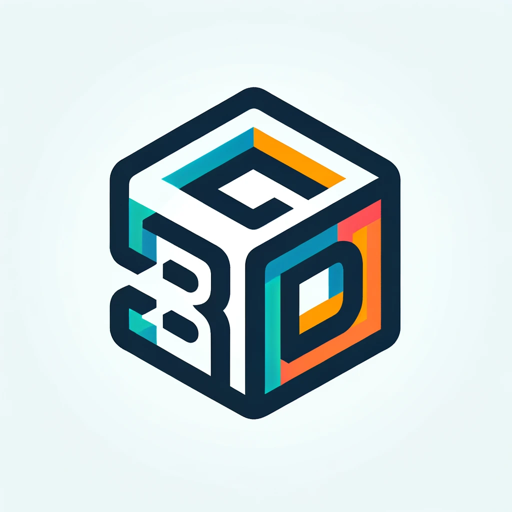3D Render-hyper-realistic 3D renders
AI-Powered Realistic 3D Renderings
What can I do with 3D Render?
Design a minimalist, modern chair.
Render a modern and scandanavian living room.
Create a detailed, outdoor architectural structure.
Related Tools
Load More
architecture render engine gpt
Specializes in creating architectural renders using dall e

ThreeJS
Your personal Three.js assistant and code generator with a focus on responsive, beautiful, and scalable UI. Write clean code and become a much faster developer.

Three JS Development
IMA-GE-NERATOR (3D/ REAL)
Generates ultra-clear, 3D images from user-provided keywords or descriptions.

3D Image Generation AI
specializes in transforming textual descriptions into vivid 3D visualizations, making it an invaluable tool for designers, architects, educators, and enthusiasts in the field of 3D modeling and rendering.

Artistic Vision
A 3D art creator focusing on African American figures in diverse styles.
20.0 / 5 (200 votes)
Introduction to 3D Render
3D Render is a specialized tool designed to create hyper-realistic 3D visualizations from design concepts and sketches. It excels in transforming 2D ideas into lifelike 3D models, emphasizing realistic textures, materials, and lighting. This tool is particularly valuable for designers, architects, and hobbyists who seek to bring their creative visions to life with high fidelity. For example, an architect can use 3D Render to visualize a new building design, incorporating realistic materials like glass, concrete, and wood, under various lighting conditions to present to clients.

Main Functions of 3D Render
Realistic Texturing
Example
Applying lifelike textures to a virtual model of a leather sofa.
Scenario
A furniture designer wants to present a new sofa design to a manufacturer. Using 3D Render, the designer can apply realistic leather textures to the 3D model, showing how the final product will look with different leather finishes, enhancing the presentation and aiding in material selection.
Advanced Lighting
Example
Simulating natural and artificial lighting in an interior design project.
Scenario
An interior designer is creating a visualization of a living room. By using 3D Render's advanced lighting features, the designer can demonstrate how the room will look under various lighting conditions, such as daylight, evening light, and artificial lighting, helping clients make informed decisions about light fixtures and window placements.
Material Customization
Example
Customizing the material properties of a new smartphone design.
Scenario
A product designer is working on a new smartphone prototype. With 3D Render, they can experiment with different materials for the phone's casing, such as metal, plastic, and glass, adjusting properties like reflectivity and texture to achieve the desired aesthetic and functional qualities.
Ideal Users of 3D Render
Designers and Architects
Designers and architects benefit immensely from 3D Render as it allows them to create detailed and realistic visualizations of their projects. This capability helps in client presentations, material selection, and overall project planning. The ability to see a project in a lifelike 3D model before actual construction or production starts can save time and resources.
Students and Hobbyists
Students and hobbyists can use 3D Render to hone their design skills and experiment with different ideas in a risk-free environment. It offers a platform to learn about textures, lighting, and material properties through practical application, making it an excellent tool for education and personal projects.

How to Use 3D Render
1
Visit aichatonline.org for a free trial without login, also no need for ChatGPT Plus.
2
Upload or create your initial design sketch, ensuring it is clear and detailed to achieve the best results.
3
Customize textures, materials, and lighting using the platform's intuitive tools to match your design vision.
4
Review and iterate your 3D render, making adjustments as needed to achieve the desired level of realism.
5
Export your finalized 3D render in the preferred format, ready for presentations, portfolios, or further editing.
Try other advanced and practical GPTs
Ghibli Cartoonizer I Fast Photo to Cartoon
Transform photos into Ghibli-style cartoons with AI.

Chat PDF 👉🏼 +1000 pages ▶️ +2GB ▶️ ⚡️Fast
AI-Powered PDF Analysis and Summarization.

Fast Doc Extract, Translate & Format
AI-powered document extraction and translation.

Whiteboard Animation Expert
AI-powered Whiteboard Animation Tool

Animation Wizard
AI-powered animation creation made easy.

プログラミング サポーター
AI-powered support for coding and learning.

architecture render engine gpt
AI-powered architectural renderings made easy.

Replica Render
Transform and describe your images with AI

Grammar checker
AI-powered tool for flawless writing
Pixel Art Pet Avatar Creator
AI-powered pixel art avatars for your pets.

リアル画像生成くん
AI-powered realistic image creation

StabilityMind Core AI
AI-Powered Solutions for Fragility and Conflict

- Product Design
- Interior Design
- Educational Projects
- Architectural Visualizations
- Portfolio Development
Detailed Q&A about 3D Render
What file formats can I upload for my initial design?
You can upload common file formats such as JPEG, PNG, and PDF for your initial design sketches.
Can I adjust lighting and textures after generating a 3D render?
Yes, you can easily adjust lighting, textures, and other elements to refine your 3D render to perfection.
Is it possible to include real-world elements in my 3D render?
Absolutely. You can integrate real-world elements into your 3D renders for enhanced realism and contextual relevance.
What are some common use cases for 3D Render?
Common use cases include architectural visualizations, product design mockups, interior design presentations, and educational projects.
Do I need any prior experience in 3D modeling to use this tool?
No prior experience is necessary. The platform is user-friendly and provides intuitive tools to guide you through the rendering process.